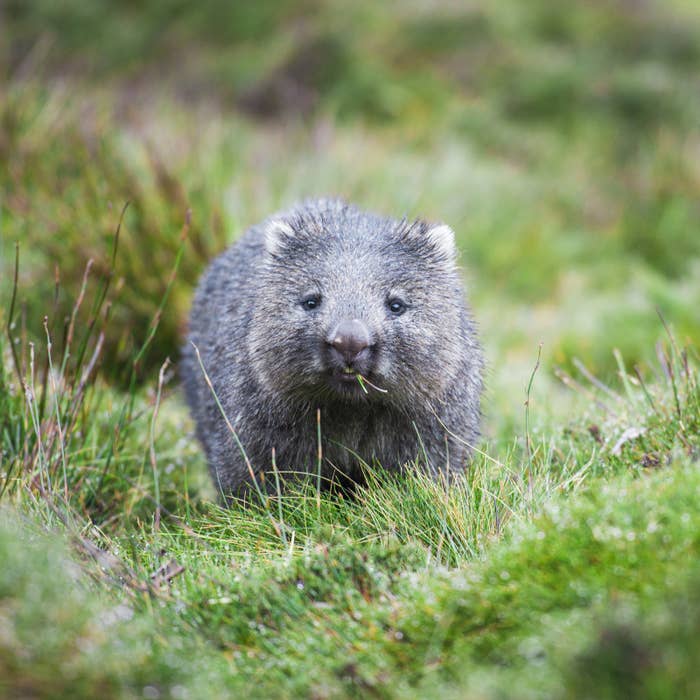Wombat Noises
Have you ever heard the sound of a wombat? If not, you're in for a treat! These adorable marsupials have a unique vocalization that is sure to capture your attention. But what do these noises mean, and what can we learn from them? Let's explore the world of wombat noises together.
Wombat Noise Pain Points
For those who live near wombat habitats, their noises can be a source of annoyance. Wombats are nocturnal animals, and their vocalizations can keep people up at night. In addition, their burrowing can cause damage to gardens and crops. However, it's important to remember that humans are the ones encroaching on their natural habitats, and we must learn to coexist with these amazing creatures.
What is the Target of Wombat Noises?
Wombat noises are a way for these animals to communicate with each other. They make a variety of sounds, including growls, grunts, and barks. Some of their noises are used to establish territory, while others are used to attract a mate. They also make warning noises to alert other wombats of potential danger.
Summary of Main Points
In summary, wombat noises are an important part of these animals' communication and behavior. While they can be a source of annoyance for humans, it's important to remember that we must share the planet with other creatures. Now, let's dive deeper into the world of wombat noises.
The Purpose of Wombat Noises
One of the most interesting aspects of wombat noises is their use in social interactions. For example, male wombats will emit a deep growling noise to establish territory and warn other males to stay away. Meanwhile, females will make a series of grunts and barks to signal their readiness to mate. These noises help to ensure that each wombat is aware of their place in the social hierarchy.

But wombats don't just use noises for social interactions. They also make a range of sounds to communicate danger or discomfort. For example, a wombat who feels threatened may emit a series of high-pitched barks to warn others in the area. These noises are essential for their survival in the wild, as they help to alert other animals of potential danger.
My Personal Experience with Wombat Noises
As a wildlife photographer, I've been fortunate enough to witness the magic of wombat noises firsthand. One experience that stands out in my mind was during a trip to Tasmania, where I was able to observe a female wombat making a series of grunts and barks to signal her readiness to mate. It was an incredible display of animal communication, and one that I'll never forget.

The Sounds of Wombat Aggression
While wombats are typically gentle creatures, they can become aggressive if they feel threatened. One of the most recognizable sounds of wombat aggression is their growling noise. This deep, guttural noise is used to establish dominance and warn other animals to stay away. Studies have shown that wombats who growl louder are typically the most dominant in their social group.
Why Do Wombats Sneeze?
If you've ever heard a wombat sneeze, you might be wondering what the purpose of this noise is. Researchers believe that wombats sneeze to clear their nasal passages, as they are susceptible to respiratory infections. However, some wombats have been observed sneezing during social interactions, which could suggest that it's also a way to communicate with each other.
The Importance of Wombat Noises in the Wild
Wombat noises play an important role in the survival of these animals in the wild. From establishing territory to warning others of danger, their vocalizations help to ensure that they are able to communicate and navigate their environment effectively. It's a reminder of the incredible complexity of animal behavior, and the importance of preserving natural habitats for generations to come.
Question and Answer
Q: Can wombats make any sounds other than growls and grunts?
A: Yes! Wombats are capable of making a range of noises, including barks, snarls, and sneezes.
Q: Are wombat noises harmful to humans?
A: While wombat noises can be a source of annoyance to humans, they are not harmful.
Q: How do wombats use noises to communicate with each other?
A: Wombats use a variety of noises to communicate, including growls, grunts, and barks. These noises are used to establish territory, attract mates, and signal danger or discomfort.
Q: Why do wombats live in burrows?
A: Burrows provide wombats with a safe place to sleep and raise their young. They also help to regulate their body temperature and protect them from predators.
Conclusion
In conclusion, wombat noises are an important part of these animals' behavior and communication. While they can be a source of annoyance for humans, we must learn to coexist with these amazing creatures and appreciate the unique sounds they make. By preserving natural habitats and respecting the boundaries of these creatures, we can ensure that future generations will be able to enjoy the magic of wombat noises for years to come.
Gallery
Don't Be Alarmed But Wombats Can Run 25 Mph (and 9 Other Wombat Facts

Photo Credit by: bing.com / don wombat grass eating mind some just buzzfeed
Fuses Do Affect Sound, The Question Is How Much | Page 5 | Audio
Photo Credit by: bing.com / wombat wombats tasmania bombato fuses australien thecultureconcept cutest mathilde australie
Angry Wombat Noises - YouTube

Photo Credit by: bing.com / wombat noises angry
Wombat Sounds & Calls (including A Hearty Sneeze!) - YouTube

Photo Credit by: bing.com / wombat
Wombat Eating With Noises Of Australian Wildlife Stock Footage - Video

Photo Credit by: bing.com / wombat noises wildlife eating australian